Jennifer Connelly in ‘Of Love and Shadows’
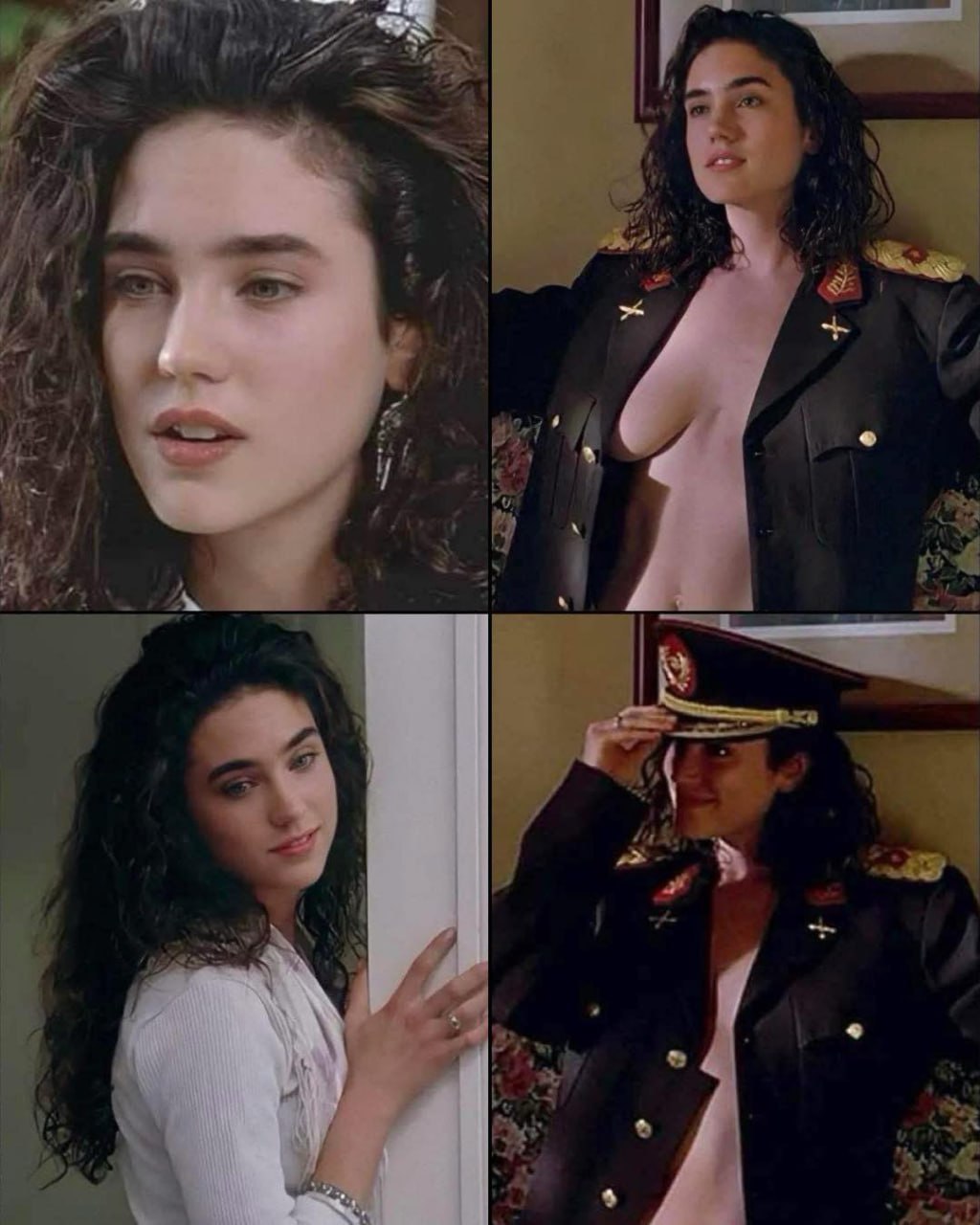
Introducing Of Love and Shadows (1994): Jennifer Connelly in a Tale of Love and Resistance
Overview
Of Love and Shadows (1994), also known as De amor y de sombra, is a Chilean-Argentine-American drama directed by Betty Kaplan, based on the 1984 novel by Isabel Allende. Set against the brutal backdrop of Pinochet’s dictatorship in 1973 Chile, the film weaves a story of romance, political awakening, and courage. Jennifer Connelly stars as Irene Beltrán, a privileged magazine editor whose encounter with a rebellious photographer, Francisco Leal (Antonio Banderas), transforms her life. With a runtime of 103 minutes and an R rating, the film combines lush visuals with a harrowing depiction of political oppression, earning praise for its performances despite mixed reviews for its execution. This article provides a comprehensive exploration of Of Love and Shadows, focusing on Connelly’s role, the plot, cast, production, themes, reception, and cultural significance, situating it within the context of 1990s political cinema.
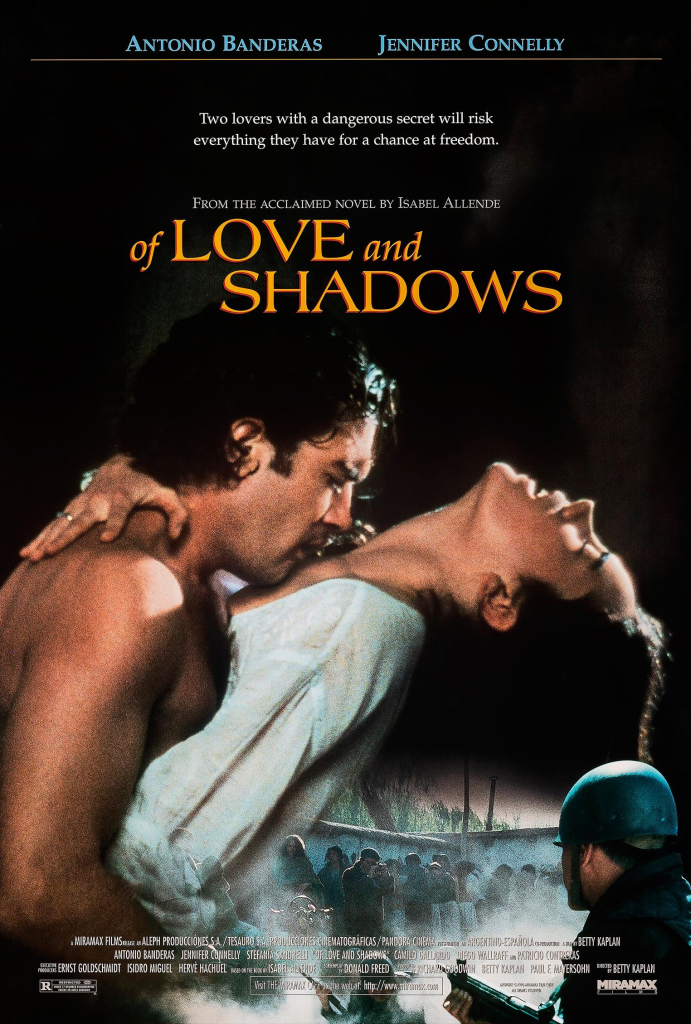
Plot Summary
Set in Santiago, Chile, shortly after the 1973 military coup that installed Augusto Pinochet’s regime, Of Love and Shadows follows Irene Beltrán (Jennifer Connelly), a glamorous magazine editor from an affluent family. Engaged to her cousin Gustavo (Camilo Gallardo), a captain in the fascist military, Irene lives in blissful ignorance of the regime’s atrocities—disappearances, executions, and torture. Her sheltered world unravels when Francisco Leal (Antonio Banderas), a handsome photographer with ties to the underground resistance, applies for a job at her fashion magazine.
Assigned to cover a fluff piece about Angelina, a self-proclaimed saint, Irene and Francisco witness the military abduct the young woman after she humiliates a soldier. This incident, based on a true event, sparks Irene’s curiosity and compassion, prompting her to promise Angelina’s mother she will investigate. As Irene and Francisco delve deeper, they uncover mass graves and evidence of state-sponsored violence, putting their lives at risk. Their professional partnership evolves into a passionate romance, fueled by shared danger and a mutual desire to expose the truth.

The narrative traces Irene’s transformation from a naive socialite to a courageous ally of the resistance, navigating betrayals, including Gustavo’s loyalty to the regime, and threats from military officials like Comandant Ramirez (Claudio Ciacci). Supporting characters, such as Mario (Patricio Contreras), a gay makeup artist, and Beatriz (Stefania Sandrelli), Irene’s oblivious mother, add depth to the story. The film builds to a tense climax as Irene and Francisco, hunted by the military, must decide whether to flee or continue their fight, culminating in a bittersweet resolution that underscores the cost of resistance and the power of love.

Jennifer Connelly: The Heart of the Film
Jennifer Connelly, aged 24 during filming, delivers a compelling performance as Irene, marking one of her early leading roles following The Rocketeer (1991) and Career Opportunities (1991). Known for her striking beauty and emotive depth, Connelly portrays Irene’s evolution with nuance, transitioning from a frivolous heiress to a woman awakened to her country’s suffering. Critics praised her ability to convey Irene’s growing awareness, with Variety noting she is “convincing in her evolution from a frivolous young woman to one willing to take risks for the sake of compassion and freedom.”
Connelly’s attempt at a Chilean accent, while not flawless, is serviceable, and her chemistry with Banderas grounds the film’s romantic core. Her performance is particularly striking in scenes of emotional weight, such as Irene’s confrontation with the reality of mass graves, where her expressive eyes capture both horror and resolve. Despite the film’s uneven pacing, Connelly’s presence elevates it, with fans on X describing her as “positively gorgeous” and a highlight of the production. Her role in Of Love and Shadows showcases her versatility, paving the way for later acclaimed performances in Requiem for a Dream (2000) and A Beautiful Mind (2001).

Cast and Characters
Antonio Banderas, at the height of his early Hollywood career (Philadelphia, Interview with the Vampire), plays Francisco Leal with passionate intensity. His portrayal of a photographer torn between personal safety and revolutionary ideals complements Connelly’s arc, though some reviewers noted his “wandering eyes” in scenes, suggesting uneven focus. Variety lauded his “passionate and heart-winning” characterization, making Francisco a believable catalyst for Irene’s awakening.
The supporting cast includes Stefania Sandrelli as Beatriz, Irene’s aristocratic mother, who embodies the willful ignorance of Chile’s elite. Camilo Gallardo’s Gustavo, the military fiancé, is a chilling foil, representing the regime’s brutality. Patricio Contreras shines as Mario, the makeup artist whose quiet defiance adds a layer of humanity, earning special praise from critics. Other notable performances include Diego Wallraff as Jose, Francisco’s brother, and Susana Cortinez as Rosa, a humorous housekeeper. The ensemble, while occasionally hampered by stilted English dialogue, brings authenticity to the film’s depiction of a fractured society.
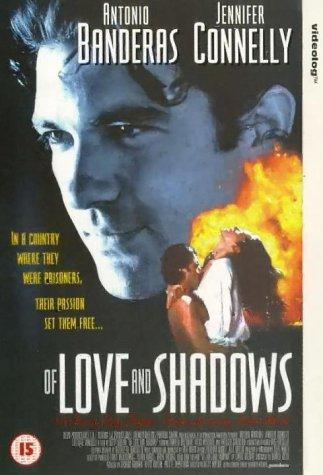
Production and Direction
Directed by Betty Kaplan in her feature debut, Of Love and Shadows was a co-production between Miramax, Aleph Producciones S.A., and Pandora Cinema, filmed on location in Argentina near the Chilean border to evoke Santiago’s atmosphere. Adapted by Kaplan and Donald Freed from Allende’s novel, the screenplay aims to balance romance with political thriller elements but struggles with pacing and clunky voice-over narration, delivered by Connelly in a detached tone. Shot by cinematographer Felix Monti, the film boasts vibrant visuals, with Argentina’s landscapes and urban settings capturing Chile’s beauty and tension. Jose Nieto’s score adds emotional depth, though some scenes linger too long on non-essential family moments, as noted by reviewers.
Produced by Richard Goodwin, Paul F. Mayersohn, and others, the film faced challenges in translating Allende’s dense novel into a cohesive narrative. Kaplan’s inexperience, as her first feature, led to criticism of “flat and stillborn” scenes that failed to capitalize on the story’s urgency. The single love scene between Connelly and Banderas, while tender, was deemed “grossly produced” by some, missing an opportunity for emotional impact. Despite these flaws, the film’s technical credits, including slick editing by Kathy Himoff and Bill Butler, were praised for their polish.
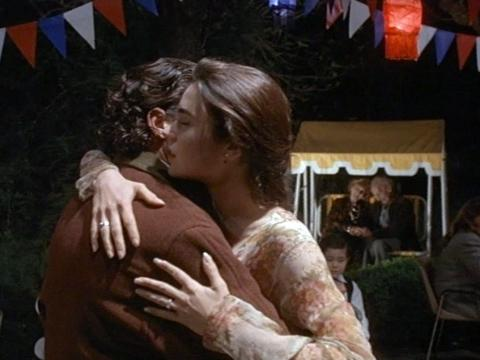
Themes and Style
Of Love and Shadows explores themes of political awakening, love as resistance, and the clash between privilege and reality. Irene’s journey mirrors Chile’s own reckoning with Pinochet’s regime, as she moves from ignorance to action, reflecting the novel’s focus on personal and collective transformation. The romance between Irene and Francisco, born in the shadow of oppression, symbolizes hope amidst despair, though some critics found it “shallow” due to underdeveloped chemistry. The film also addresses class disparity, with Irene’s elite background contrasting Francisco’s working-class roots, and the regime’s atrocities—mass graves, disappearances—serve as a stark reminder of historical truths.
Stylistically, the film blends romantic drama with political thriller elements, aiming for the intensity of films like Missing (1982) or Sweet Country (1987) but falling short due to disjointed pacing. Its R rating reflects moderate violence (depictions of executions) and a brief, non-explicit love scene. The use of English with Spanish accents, criticized as a “disaster” by some, detracts from authenticity, with suggestions that a Spanish-language remake with local actors would better serve the story. Despite these issues, the film’s earnest attempt to highlight Chile’s “disappeared” resonates, drawing from a real incident that challenged military power.
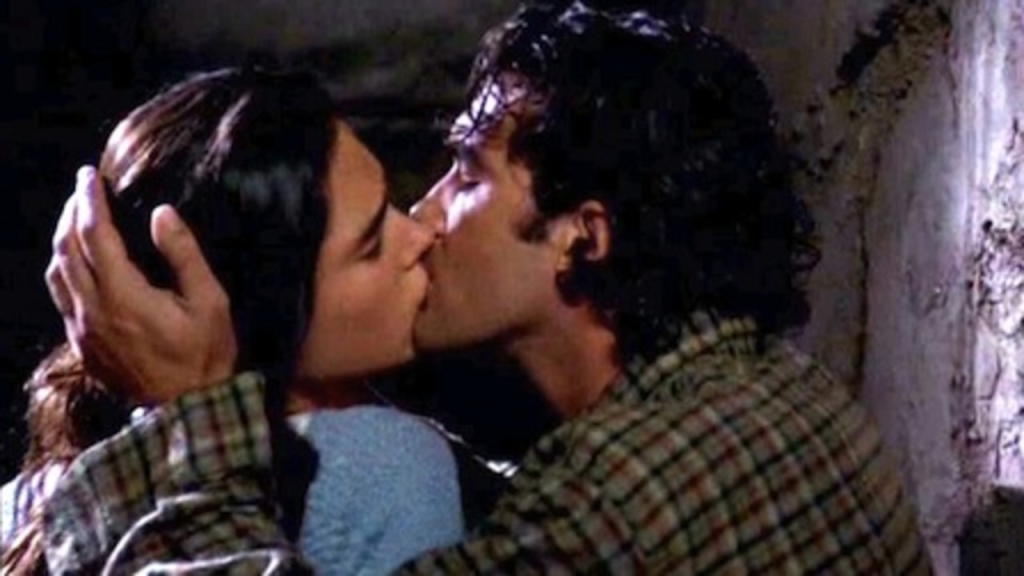
Reception and Legacy
Of Love and Shadows received mixed reviews upon its release on May 10, 1996, in the U.S., following a 1994 premiere in Argentina, where it garnered nearly 300,000 admissions. On IMDb, it holds a 4.9/10 rating, with 18 user reviews praising its historical relevance but criticizing its execution. Rotten Tomatoes lacks a Tomatometer score, but user feedback describes it as a “decent film” undermined by a “snoozefest” script and lackluster direction. Variety highlighted the “top-notch” performances, particularly Connelly and Banderas, but others, like Siskel & Ebert, found it “misconceived and curiously uninvolving” despite its urgent subject.
Audience reactions vary, with some appreciating the film’s attempt to illuminate Chile’s dark history, as one IMDb user noted: “It’s about time we have more films bring to life the atrocities that occurred in Chile.” Others, particularly on Letterboxd, called it “pure garbage,” citing poor chemistry and a misleadingly erotic poster that promised more sensuality than delivered. The film earned four nominations, including at the Imagen Awards, but failed to achieve the critical success of Allende’s The House of the Spirits adaptation.
Its legacy lies in its earnest depiction of Pinochet’s Chile and Connelly’s early showcase of dramatic range. Available on Amazon Prime, Apple TV, and YouTube, it remains a niche title for fans of Connelly, Banderas, or political dramas, though it’s overshadowed by stronger entries like Missing. Posts on X from 2023–2024 highlight Connelly’s enduring appeal, with images from the film shared by @TheCinesthetic, reflecting its visual allure despite narrative flaws.
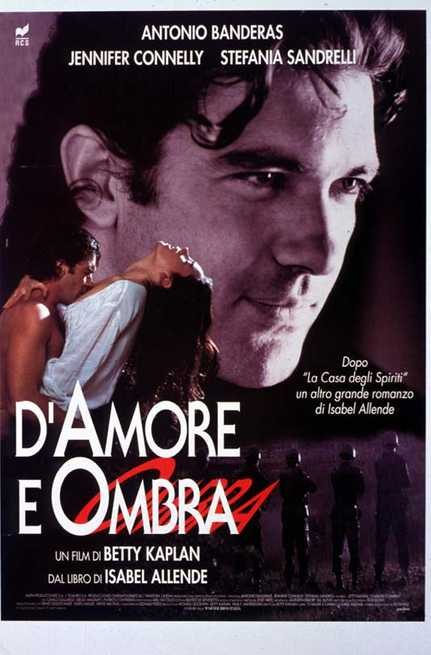
Cultural and Historical Context
Released in 1994, Of Love and Shadows reflects the 1990s trend of adapting Latin American literature for global audiences, following the success of Like Water for Chocolate (1992). Pinochet’s dictatorship, which lasted from 1973 to 1990, left a legacy of trauma, with over 3,000 “disappeared” and tens of thousands tortured. Allende, a Chilean exile, drew from these realities, and the film’s focus on a real incident involving the discovery of mass graves underscores its historical weight. However, its English-language production and casting of non-Latin actors sparked debate about authenticity, with critics arguing a Spanish-language version would better honor the story.
The film also engages with gender and class dynamics, portraying Irene as a woman breaking free from patriarchal and elitist constraints. Its release coincided with growing global awareness of human rights abuses, making its themes resonant, though its execution limited its impact. For Connelly, the role was a bold step toward mature, socially conscious roles, aligning with her later work in Waking the Dead (2000), which tackled similar political themes more effectively.
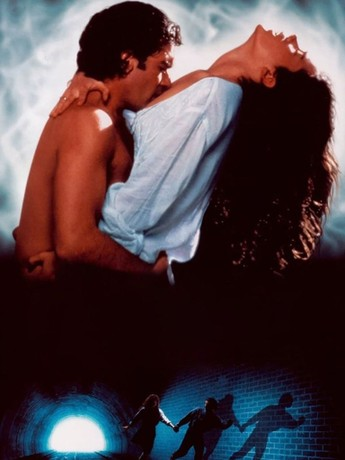
Conclusion
Of Love and Shadows (1994) is a flawed yet poignant drama that showcases Jennifer Connelly’s early talent as Irene, a woman transformed by love and political awakening in Pinochet’s Chile. Alongside Antonio Banderas’s passionate Francisco, Connelly anchors a story of courage and compassion, though Betty Kaplan’s uneven direction and a weak script hinder its potential. While not a critical success, the film’s historical relevance and strong performances make it a worthwhile watch for fans of political dramas or Connelly’s career arc.
Available on Amazon Prime, Apple TV, and YouTube, Of Love and Shadows remains a testament to the enduring power of stories that confront injustice, even if its execution falls short of its ambitions. For those drawn to tales of resistance and romance, it offers a glimpse into a dark chapter of history, illuminated by Connelly’s radiant presence and a call to remember Chile’s “disappeared.”